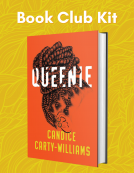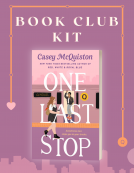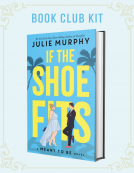
Bitter Magic
Inspired by the True Story of a Confessed Witch
by Nancy Hayes Kilgore
This title was previously available on NetGalley and is now archived.
Send NetGalley books directly to your Kindle or Kindle app
1
To read on a Kindle or Kindle app, please add kindle@netgalley.com as an approved email address to receive files in your Amazon account. Click here for step-by-step instructions.
2
Also find your Kindle email address within your Amazon account, and enter it here.
Pub Date Aug 10 2021 | Archive Date Jul 31 2021
Sunbury Press | Milford House
Talking about this book? Use #BitterMagic #NetGalley. More hashtag tips!
Description
A chance encounter leads teenaged Margaret into the circle of Isobel Gowdie, a "cunning woman" who practices magic and travels in the fairy world. But Scotland is aflame with wars over religion and "correct" belief-English against Scots, Catholics against Protestants-and in the Scottish Highlands, the witch craze is at its height. When Margaret starts to meet with Isobel to learn magic, Isobel is accused of witchcraft, and Margaret becomes a suspect, too. Can Margaret's tutor, Katharine, a Christian mystic, affect the outcome? Bitter Magic is inspired by the true story of the witchcraft trial of Isobel Gowdie in 1662.
A Note From the Publisher
Advance Praise
“Bitter Magic may masquerade as a windswept historical gothic in the mode of Daphne DuMaurier or Anya Seton, but is something rarer. Nancy Kilgore’s vision is utterly contemporary, concerned not with simple outcomes of guilt or innocence in the public sphere but the complicated shades of gray within her characters.
”—Stewart O’Nan, author of A Prayer for the Dying
". . . the prose is confident and the setting richly detailed. . . . Kilgore captures the dismal subsistence of the peasants, the pall of religious fervor, the new search for rationality, and the sorry plight of women. . . . A significant, accurate portrayal of a dour 1660s Scotland. . . ."
—Kirkus Reviews
“This page-turning story will keep you up at night, wondering what's going to happen in a much more complex story than we usually hear about "the burning times." The heroine is a curious, likeable young woman, the "witch" an expert naturalist and healer who goes astray, and you'll never see a more thrilling version of the devil.”
- Mary Dingee Fillmore, bestselling author of An Address in Amsterdam
“Compelling . . . A fascinating story made more so by the tie to the historical record and actual documents . . . a more complete, holistic portrait of a strange aspect of human history than other witch narratives.”
- Ruth Linnaea Whitney, author of SLIM, a novel of Africa
“Kilgore‘s lyrical prose and talent for world building create a wondrous landscape in which the many-layered story unfolds.”
- Tracey Enerson Wood, bestselling author of The Engineer‘s Wife
Available Editions
| EDITION | Paperback |
| ISBN | 9781620068427 |
| PRICE | $19.95 (USD) |
Featured Reviews
 Holly G, Librarian
Holly G, Librarian
Interesting take on a fascinating topic. Curiosity is always where it begins and it was interesting to see it from this perspective. My "witchy" readers will enjoy this title!
Thank you to NetGalley and the publishers for an early copy of this book.
The cover is gorgeous, and I enjoyed Margaret and Isobel’s story. They were compelling as characters, magic is always intriguing, and the setting of Scotland is beautiful to imagine. I’m always captivated by historical fiction, so I couldn’t have gone amiss with this.
However I would have preferred the option to be able to download it to my kindle - reading on my phone is bad for my eyes, my posture, and my motivation to read.
 Reviewer 708809
Reviewer 708809
Really well written, and an original story, despite being based on a true story. I loved the characters, and the feeling of reading about authentic Scottish culture.
 Jemima Y, Reviewer
Jemima Y, Reviewer
Thank you so so much to NetGalley for giving me this ARC to read and review. Ever since I read the Crucible by I have been such a geek for anything about the witch hunts that went on around the world during this time period, so reading about Isabel Gowie was fascinating as well as being a HUGE fan of historical fiction.
On to the book:
This book was unputdownable. I loved Margaret and Isabel so much. They were incredibly realistically written and their characters were flawed but continuously changing throughout (they weren't static). I also loved all the witchcraft and witchy parts of the book and I also loved the descriptions of Scotland, bringing me back to all my holidays spent visiting family there.
#NetGalley #Bitter Magic #Nancy Hayes Kilgore #YA #Fantasy #Witches #Historical Fiction
The Book Maven’s Journal Reviews for Word Connoisseurs
REVIEWER: J.Hunt
STAR RATING ⭐️⭐️⭐️⭐️⭐️
Sincere Appreciation to NetGalley, Sunbury Press & Milford House Publishing for Providing this Advance Reader's Copy for Review
Coming Soon in August 2021…
By Nancy Hayes Kilgore
“Bitter Magic” – Historical Fiction – Inspired by the True Story of a Confessed Witch
The infamous 17th C. “Witch of Auldearn Scotland,” Isobel Gowdie, is featured in Nancy Hayes Kilgore’s, “Bitter Magic.” Author Kilgore provides a distinctive sense of place and a compassionate point-of-view as she develops her characters and storyline in this novel.
This is especially true for the complex, multidimensional aspects of Isobel Gowdie’s personality and perspective. Kilgore gently balances the harsh realities of Gowdie’s daily life amid muck, starvation, abuse and misunderstandings, with the “wise woman’s” vivid imagination; lucid dreaming; charms and incantations; as well as her deviousness and desires for revenge.
“…These are her dreams and illusions, don’t you see? In her wretched life, the poor woman would escape to fairyland, where life is beautiful. And so, she imagines this place…”
Nancy Hayes Kilgore, Bitter Magic
Margaret, a local Laird’s teenage daughter, although warned to stay away from the peasant folk, began sneaking visits to Isobel to hear stories about fairies and magic. Although Margaret knew that she was disobeying her parents by befriending Isobel, little did she dream that this association could have far-reaching, and even deadly, implications.
“…The educated people have come to understand that belief in fairies and magic and witches is superstition. This superstition was held by the common people, but also by the ruling class that executed them…” Nancy Hayes Kilgore, Bitter Magic
“Bitter Magic” in a compelling page-turner. This historical fiction is emotionally engaging and entertaining. I could hardly put the book down. It's that good. Furthermore, upon reading Author Kilgore’s extensive background information on the history of the story, it's characters and place, I was even more intrigued. A fascinating scholarly reading list of other books, poems and articles related to the “Witch of Auldearn” is also included.
“…Music and dancing were good, and the Earth and its plants and animals held many secrets, power to be discovered and used. Power for the good, for healing, and for spreading love, even the love of Jesus. Saints and angels and fairies, the dead . . . there was such a vast universe of life within and around, worlds within worlds, if only people could learn to see…” Nancy Hayes Kilgore, Bitter Magic
https://www.goodreads.com/joyreadergirl1
Check-out some of my other favorite Books and their Reviews that I've posted on Goodreads at the above link. I’ve written and posted more than 300 book reviews with an average of 3.98 ⭐️⭐️⭐️⭐️ Star Rating Average on Goodreads.)
This was a slow burner for me, took some time to get into the story.
When I got into it I was absolutely hooked and could not wait to finish this book. The different points of view are easy to follow and flow well. Overall a great book which I would recommend
If you enjoyed The Familiars, Tidelands, or The History of Witches then this is a book you really need to read.
The main plot revolves around Lady Margaret, a teenager who does not quite fit the role of a lady. She does not like to ride her horse side-saddle and lets her hair fly wild behind her, and she also believes in fairies. She is curious and that curiosity leads her towards the local cunning woman, Isobel Gowdie. The book is set in Scotland in the 17th century where England and Scotland are fighting, the Catholics and Protestants and women against the patriarchal system, and the accusing of witches is starting to take hold.
The story starts quite innocently through the eyes of Margaret but as the story begins to unfold and we start to get other characters' points of view in the chapters, a more sinister plot emerges. We see how tough life in the 17th century is for a woman. We have Katherine who has lost so much but continues to try and do good and see good. Margaret’s parents are also dealing with their own grief at losing a child in the war and then go to lose another. The story highlights the troubles the lower- and upper-class face as the tragedy of losing a child is not something the lower or upper-class suffered.
Misogyny is, clearly, a very prominent theme throughout the novel. In the way in which Margaret wishes to ride her horse like a man to more serious offenses such as the minister Harry seemingly getting away with adultery whilst he is happy to shame women who have committed adultery outside the church.
Overall, the novel gripped me. I wanted the women to triumph, and my opinion of Isobel changed with every chapter! I liked that magic was ‘real’ within the novel as we see Isobel heal wounds to her face and Isobel herself truly believes she is seeing the devil and the fairy queen but at the trial, the account sounds so fantastic, and she seems to have no remorse. It almost becomes difficult to read but knowing a little of the history of accusing women of being witches and the torture they endured, I can understand why at that point, Isobel may not be the ‘perfect victim’. It then takes on an entirely new level when I got to the end of the book and realised that Isobel was a real woman. Her confession was real.
This is such a well-written and paced book and the blurred line between magic and realism added to the novel which balanced the discussion around religion and law quite well.
I will now be reading Emma Wilby’s The Visions of Isobel Gowdie.
Thank you to NetGalley and the publisher for providing me with a ARC in exchange for my honest review.
This was such a beautifully written historical fiction that incorporated real individuals and stories. A somewhat easy and quick read as well.
The plot and story development was well done and flowed nicely. The description of 17th century rural Scotland was very beautiful as well. I also really enjoyed the magic and mysticism aspect of this book.
There was a lot of religious and political discussions throughout this book that were a bit heavy and hard to understand for someone who necessarily doesn’t have a lot of historical knowledge of that time period. Additionally, the different POVs did get a bit hard to follow sometimes.
Overall, an interesting book with well written characters and story that’s heavy on the historical content.
 Reviewer 803755
Reviewer 803755
Bitter Magic, by Nancy Kilgore, is a historical fiction imagining of the witchcraft trial of Isobel Gowdie in Scotland in 1662. Thank you to NetGalley and Milford House Publishing for gifting me an advance reader copy in exchange for my honest review.
Set in the mid 17th century, the author uses extant historical documents from the trial of Isobel Gowdie to create a believable, richly embellished portrait of Scotland on the eve of Charles II’s return to the throne of England following the years under Cromwell’s rule. The story is told in multiple voices include Isobel herself, but primarily focuses on Margaret, a young woman who is the eldest daughter of the local laird, and is also a sort of coming-of-age story for her. Other characters who are featured in the story are Katharine Collace, Margaret's tutor, and the local minister, Harry Forbes. All four of these characters were real people, although much less is known about Margaret (not even her actual name) than the other three.
Tied into the history of the story is the fact that Margaret’s family, the Hays, and indeed the entire area in which they live were Covenanters. This was a religious group which came into favor in the 17th century, and was both a religious and political group who supported a Presbyterian church and renounced the papacy and the teachings of the Catholic Church. The Covenanters also supported a government run by their own church members. At the time of Isobel’s trial, the Age of Reason combined with the Scottish Reformation had many educated people (both men and woman) questioning traditional religious thought, and tending more towards the idea that religion and theology should be based on reason. Into this mix was the widespread belief system among the “common people” that there was a connection between the body, the earth and faith. Older pagan-based celebrations (such as Beltane or May Day and the ritual bonfire and dancing on May 1st, which appear as part of the story line) still prevailed, and many of the women who held onto these older rituals could find themselves accused of witchcraft, casting spells or making bargains with the Devil himself.
All of this political and religious change sets the stage for this story. Margaret, at 17, is on the cusp between childhood and adulthood. She becomes aware of Isobel Gowdie when the woman is called to help with a healing “spell” for another member of their community. She is fascinated by Isobel’s charms and chants, and seeks her out to find more about her powers. Isobel tells Margaret tales of seeing the fairies and of wild rides through the night where she goes to dance in the fairie rings beyond the eyes of mortal men. Margaret struggles between accepting the doctrines of her Covenenter faith and being enticed by the stories of faerie and the power that Isobel appears to have not only in her healing but also to call down retribution on community members who might have wronged her (and Isobel feels that the local minister, Harry Forbes, is one of those who has wronged her and other women in the community – based on some of the historical documentation, he probably had). Isobel is eventually charged with witchcraft and thrown into prison. She is tried by a council of church elders, including Margaret’s father, and winds up naming several other women in the community as witches who are part of her coven, including Margaret.
The character of Katharine Collace is harder to place into the story. She’s a less well-developed character for me and I wasn’t entirely sure of her place in the story the author is trying to tell. She’s sort of a moral touchstone, who understands why young Margaret would be fascinated by the stories of faerie Isobel tells and the power to be in charge of her own life, but who is a strong believer in the tenents of the Covenenters and a devout woman who hopes to help Margaret see that Isobel is a troubled woman who is struggling with visions and doubts about her own faith and place in society. (The character of Katharine is in some ways reflective of the author’s personal history of study into religious and mysticism.)
It’s obvious Kilgore has done a lot of research into what was, for me anyway, a lesser known time in Scottish history. She has lots of details about the countryside, the social structures of this very rural society, and the dichotomy between the ancient ways and the new thinking of the Age of Reason, even as it pertains to religious beliefs. I liked her approach to present the characters with their own individual chapters and points of view to advance the story forward. I do think most readers are going to have to head off to Wikipedia to do a little research before they understand the political and religious background of this book. I wish there had been a foreward of some kind (similar to the overview at the end of the book which answered a lot of questions for me) helping set the stage for the action to come. (As a personal note, I have 2 history degrees with research just following this period and still needed to Google the Covenenters.)
Isobel is a wonderful character and in reading the notes at the end of the book, I’m sure all of the trial transcripts that speak in Isobel’s voice helped bring her to life as the story was being written. Margaret is less of a win for me. At times, her dialogue and described behavior made her seem MUCH younger than she was, and I actually wondered if maybe this book was supposed to be young adult oriented rather than adult historical fiction (but there are also some sections I don’t think are necessarily appropriate for a YA audience that were taken from the trial depositions). The minister and Katharine Collace are more secondary characters, and seemed somewhat tepid. I would have liked to have learned more about Katharine as she seems like a very interesting figure for her time – well respected and well learned, with a good rational mind.
Overall I’m giving this one 3.5 stars – good writing, interesting main character, and wonderful descriptions of 17th century rural Scotland as the positives; some lackluster character building for the supporting characters and a bit confusing for casual “historical fiction” readers to understand the world the story lives in.
 Sheela G, Reviewer
Sheela G, Reviewer
Overall, I found this story to be a pretty interesting account of the witch trial of Isabel Gowdie in 1600s Scotland. I hadn't heard of Covenanters and didn't know much about the religious strife at that time so I found the book to be pretty interesting. It was kind of slow at times and the end was anticlimatic but still unexpected. I really like how the author left somethings unclear and left it up to the reader to decide if Isabel is actually guilty or innocent. I wish we could have know more about Isabel's motivations since most of the book was focused on other characters. Also, I really admire that Nancy Kilgore put so much research into this novel and it really shines through in the book.
Readers who liked this book also liked:
Silvia Moreno-Garcia
Historical Fiction, Literary Fiction, Sci Fi & Fantasy


















